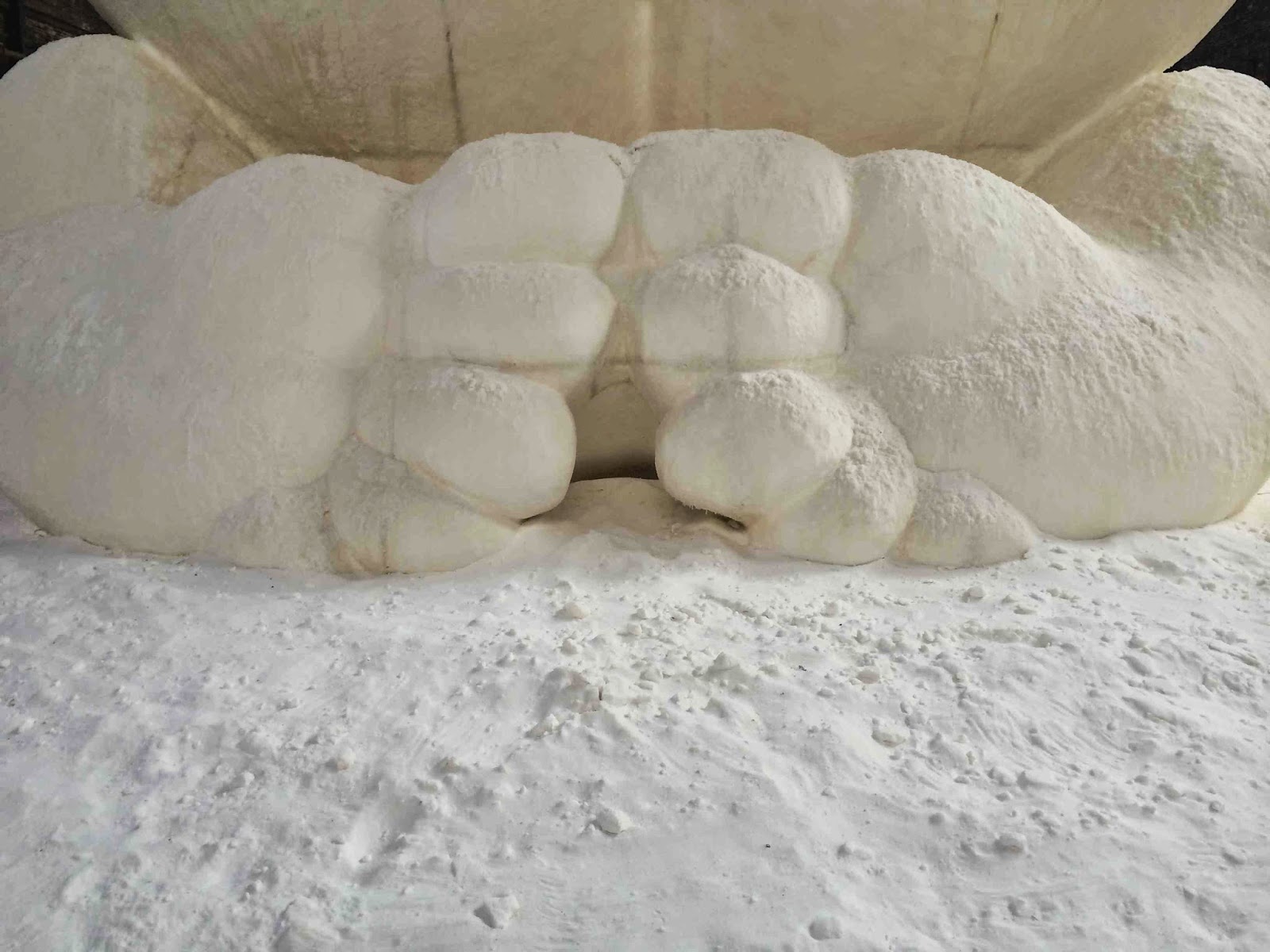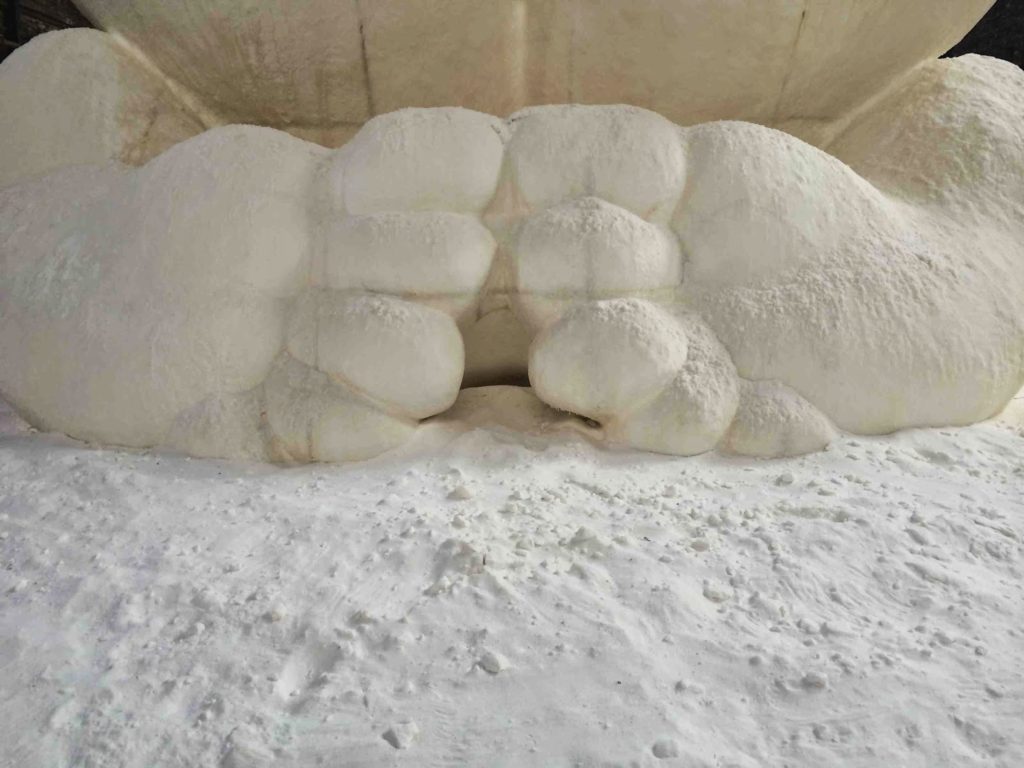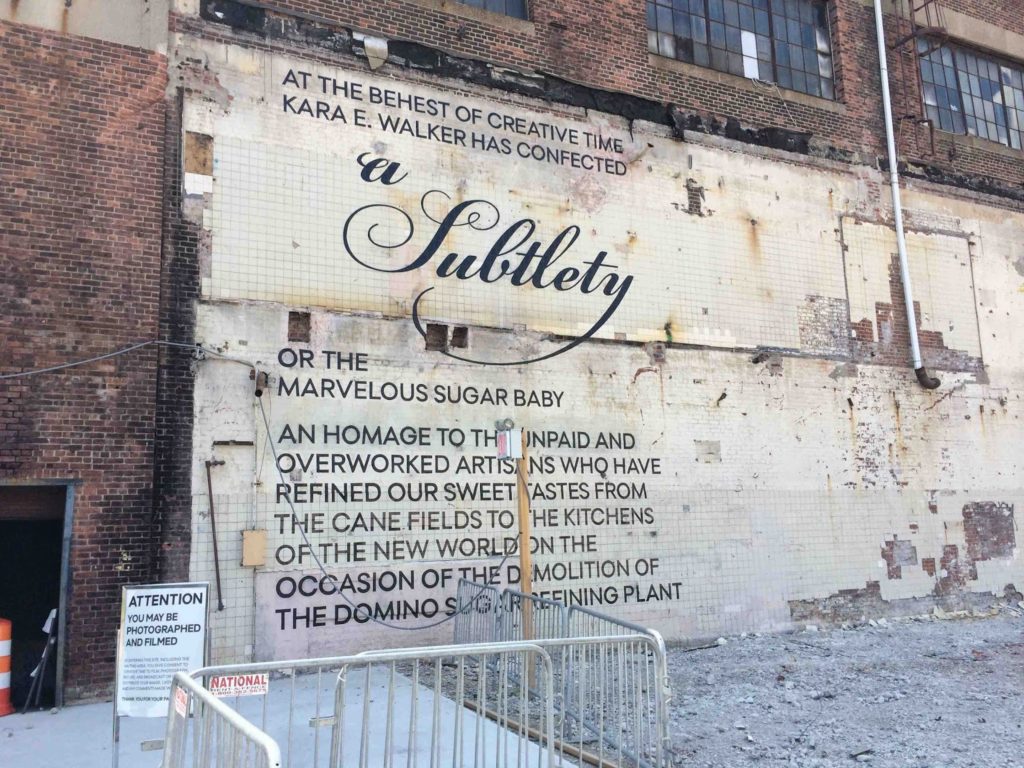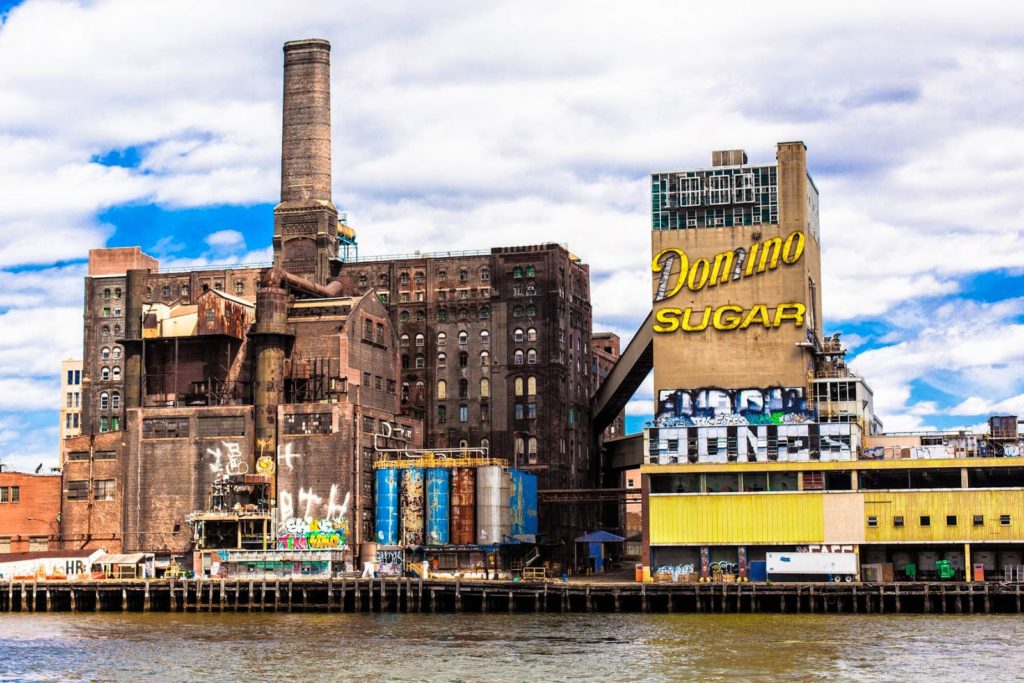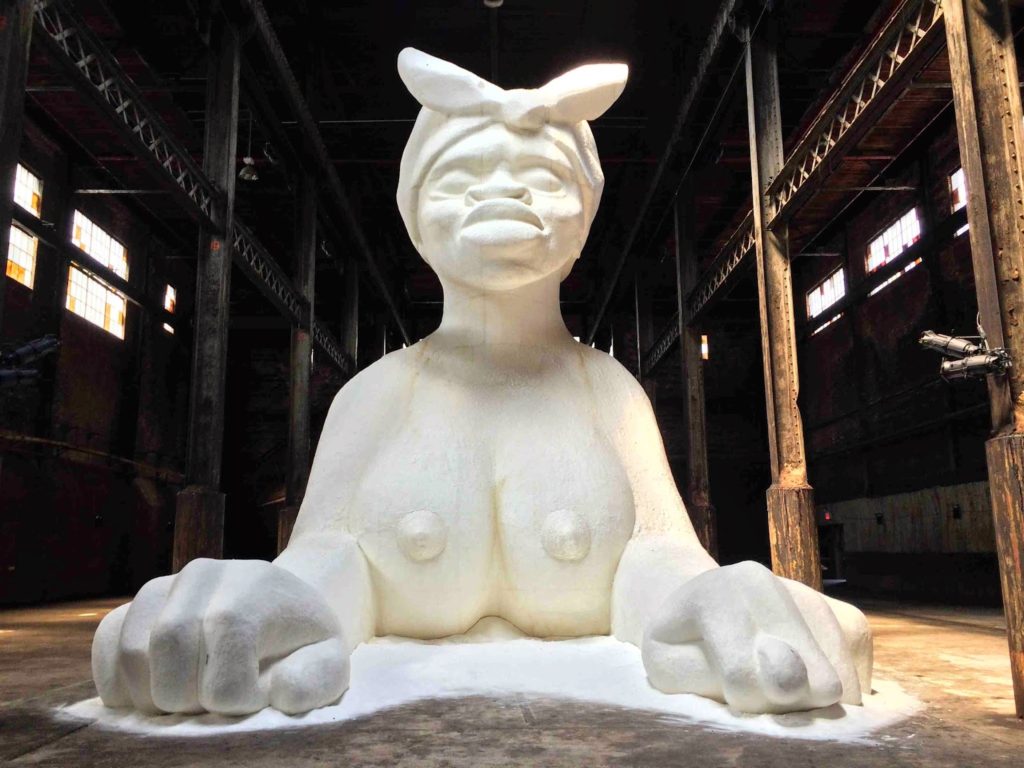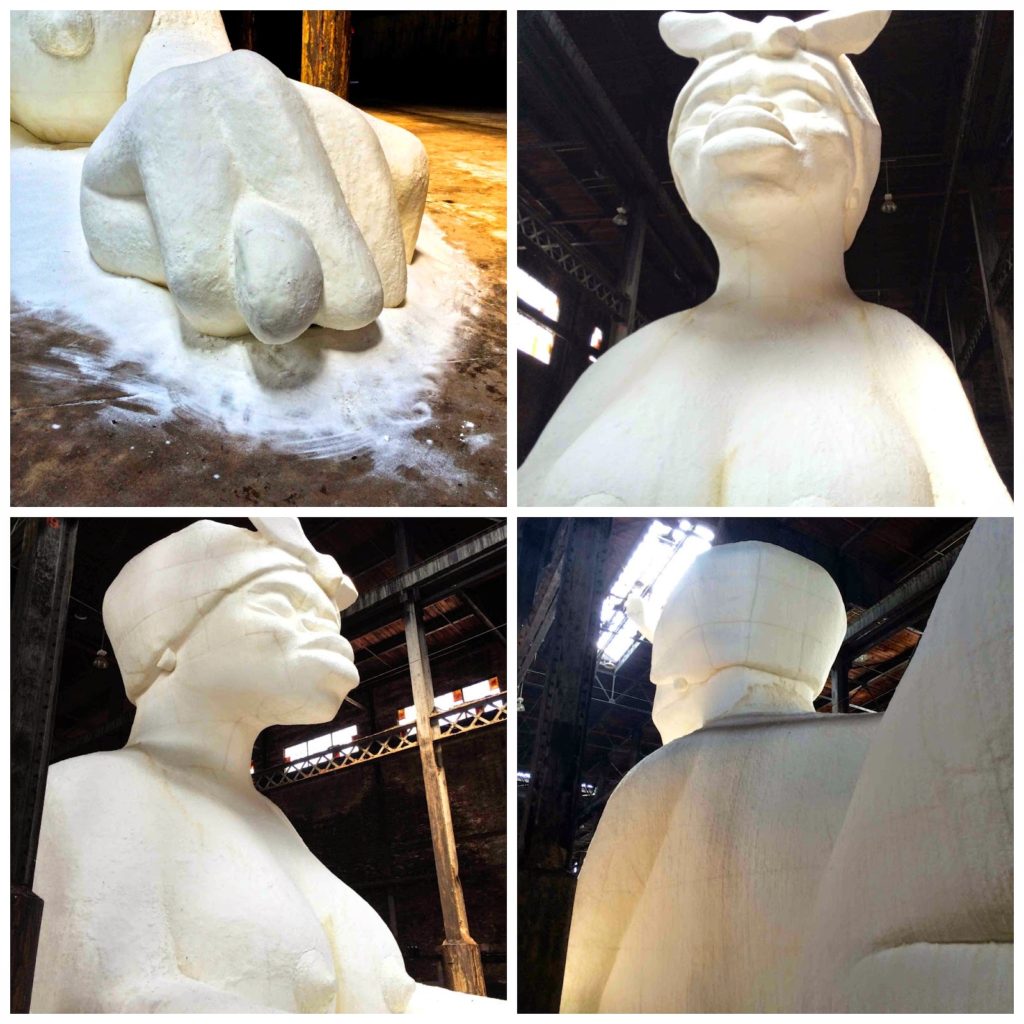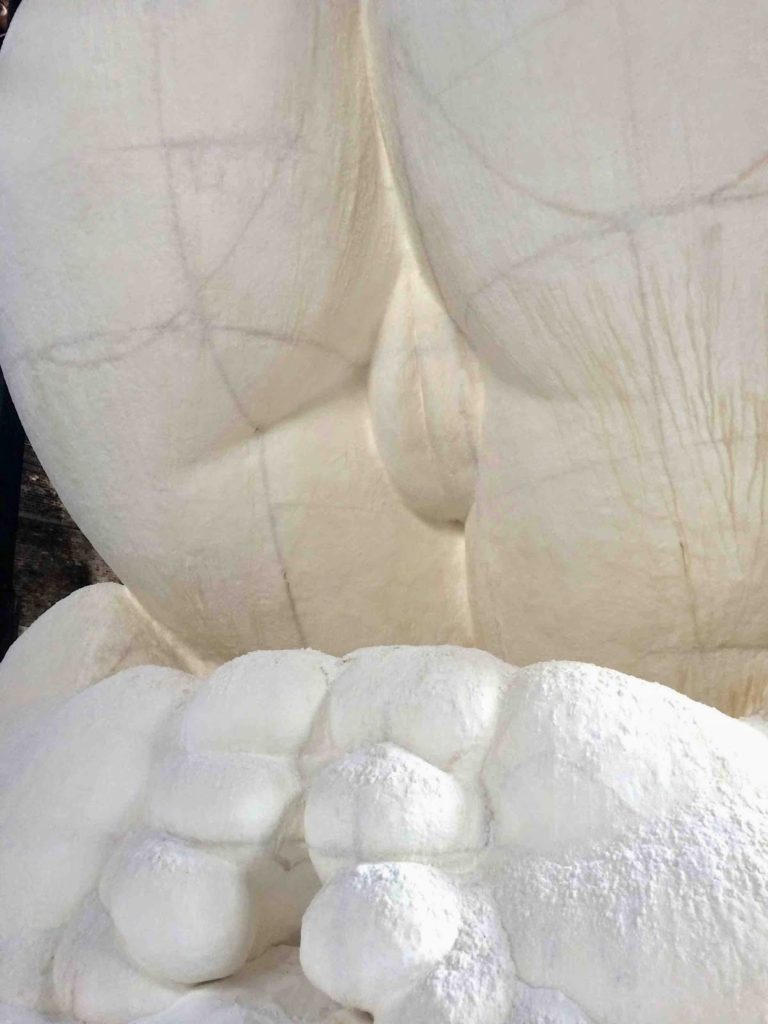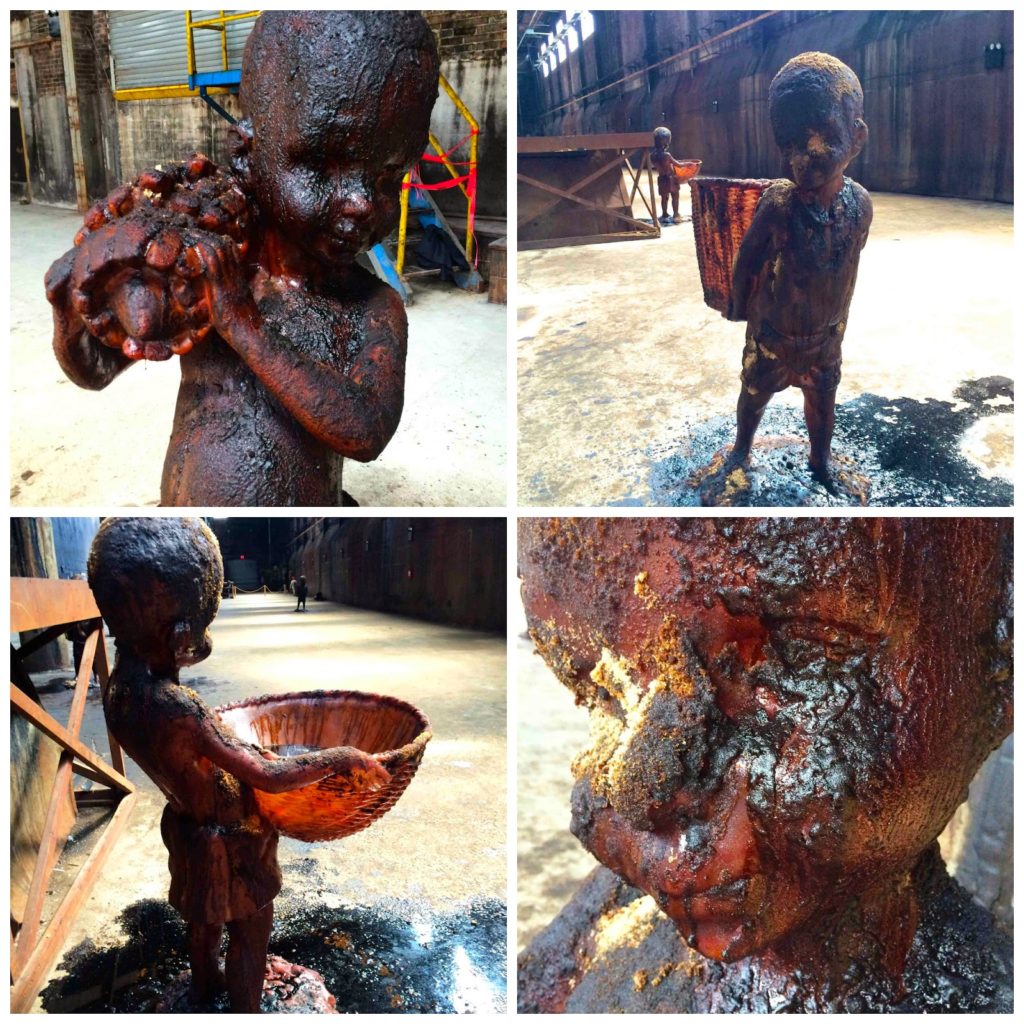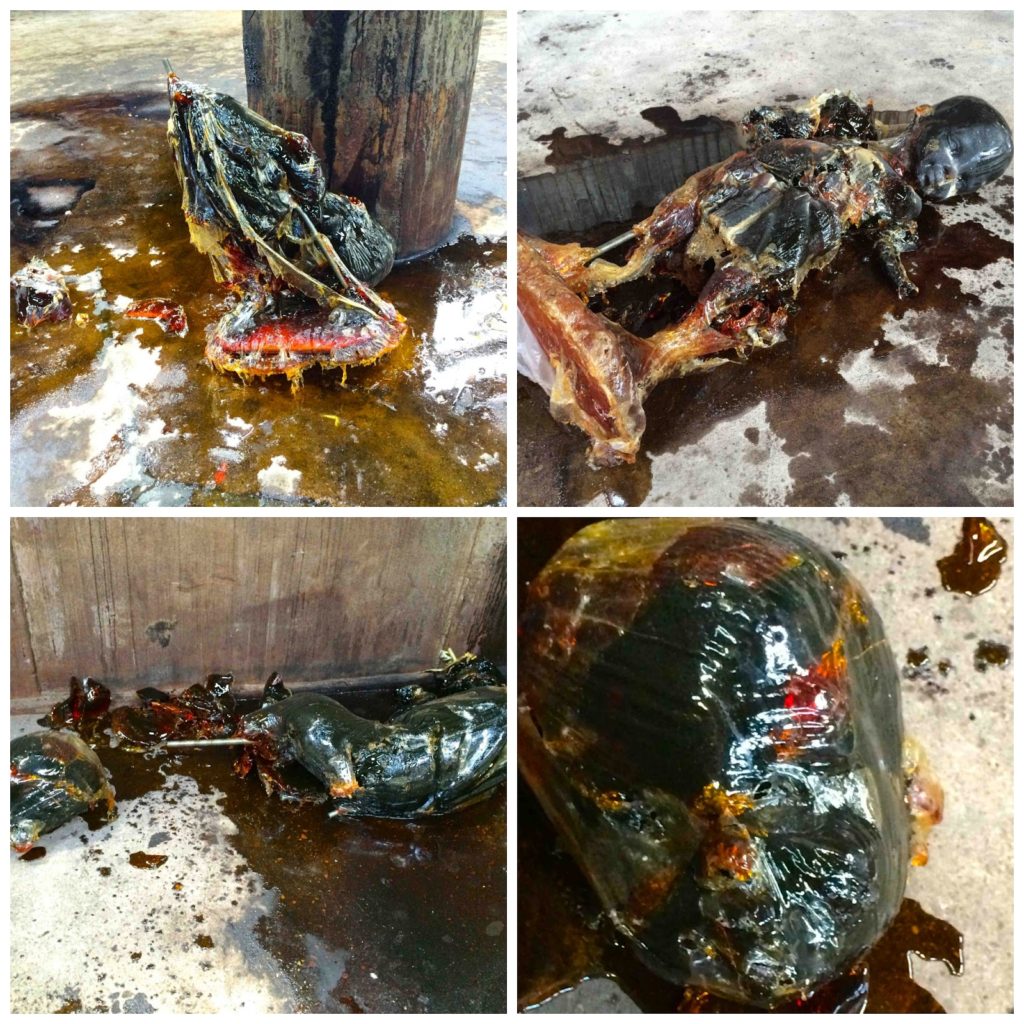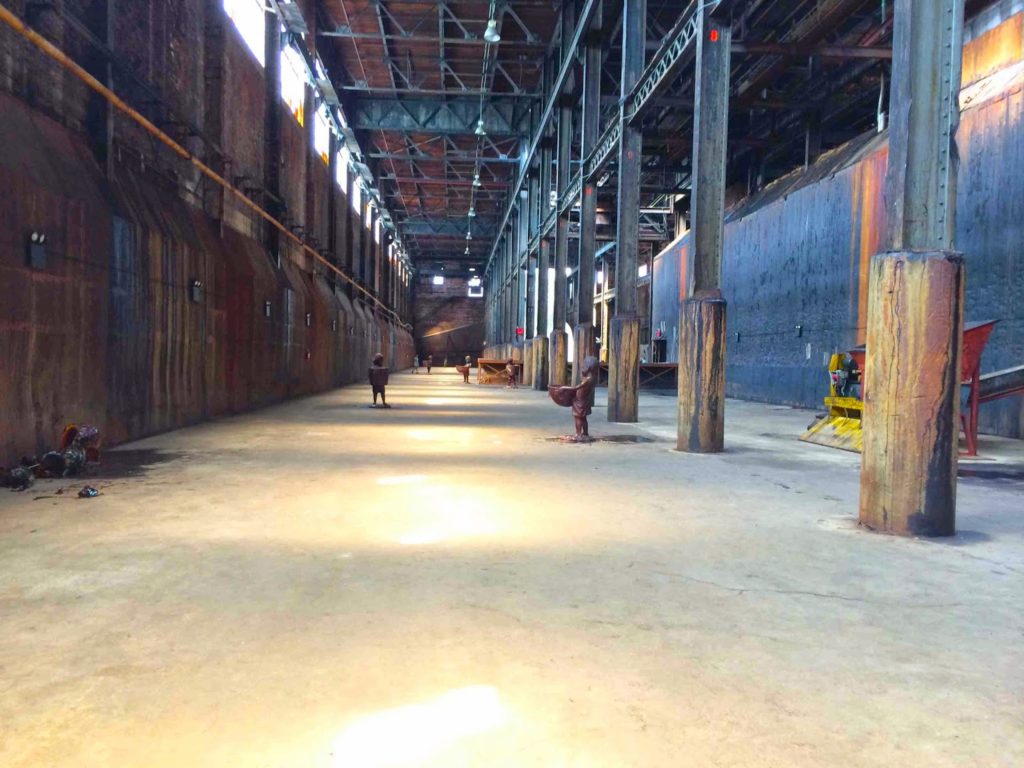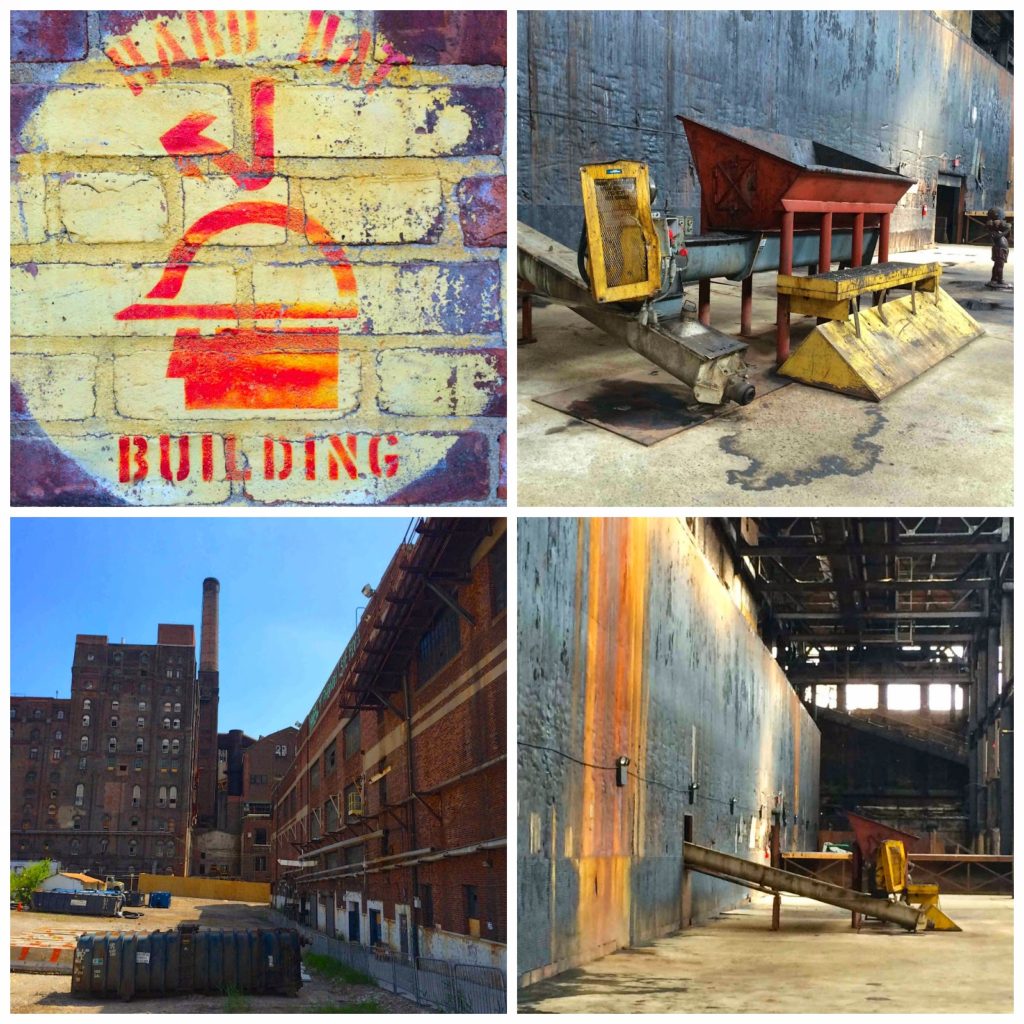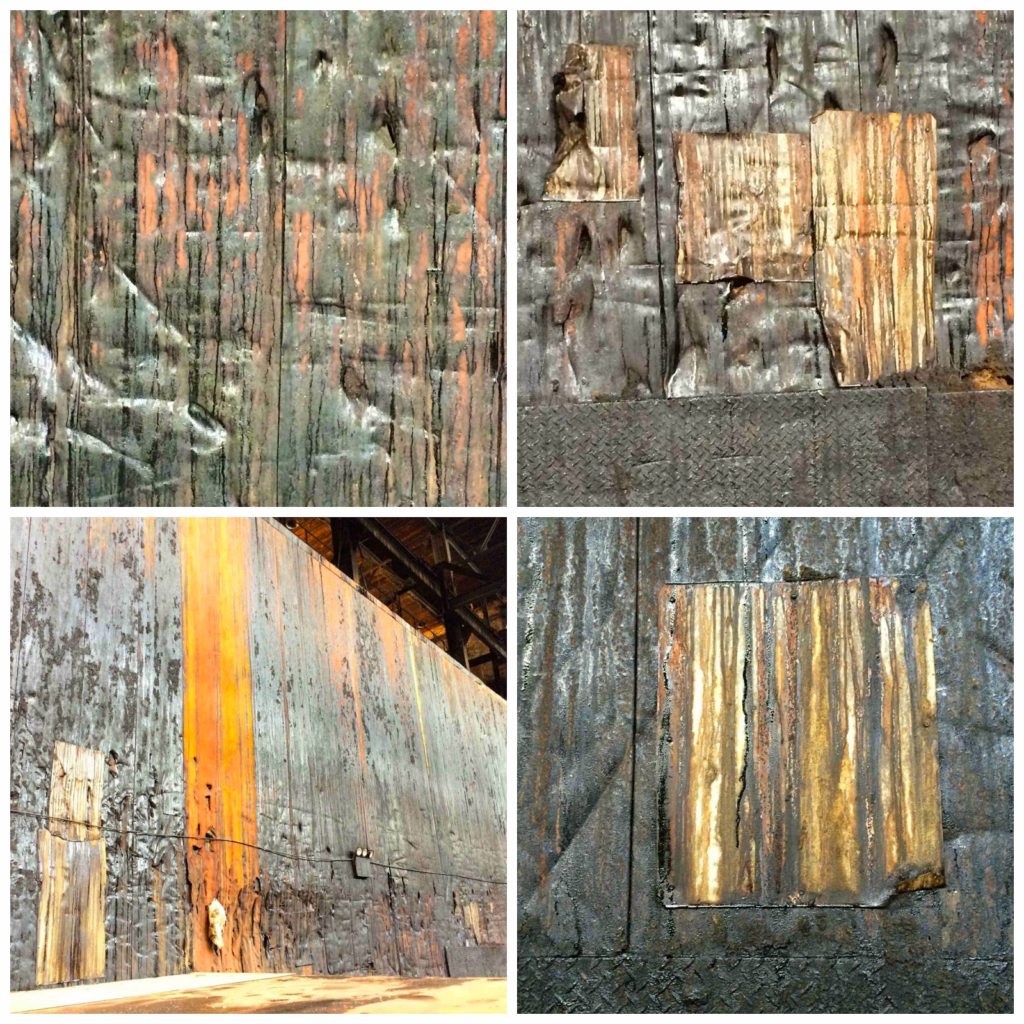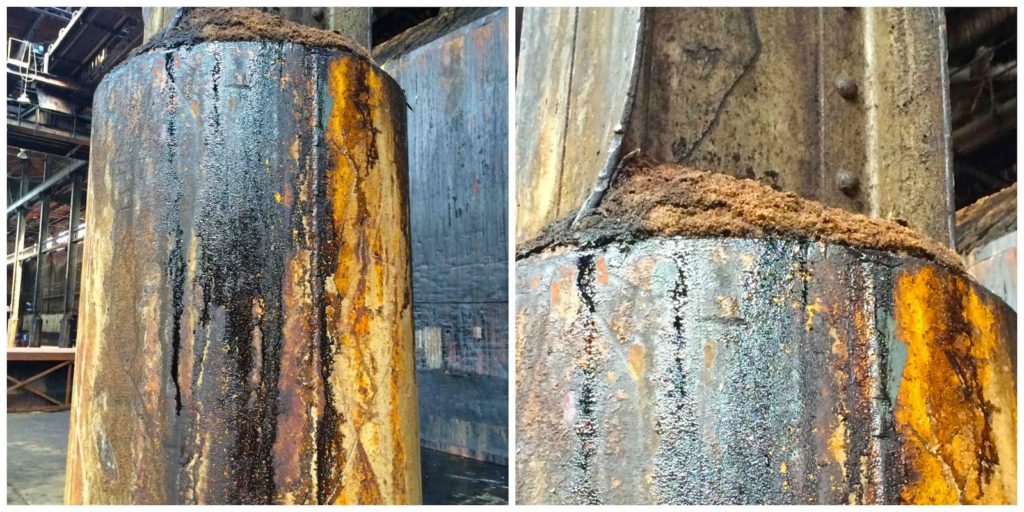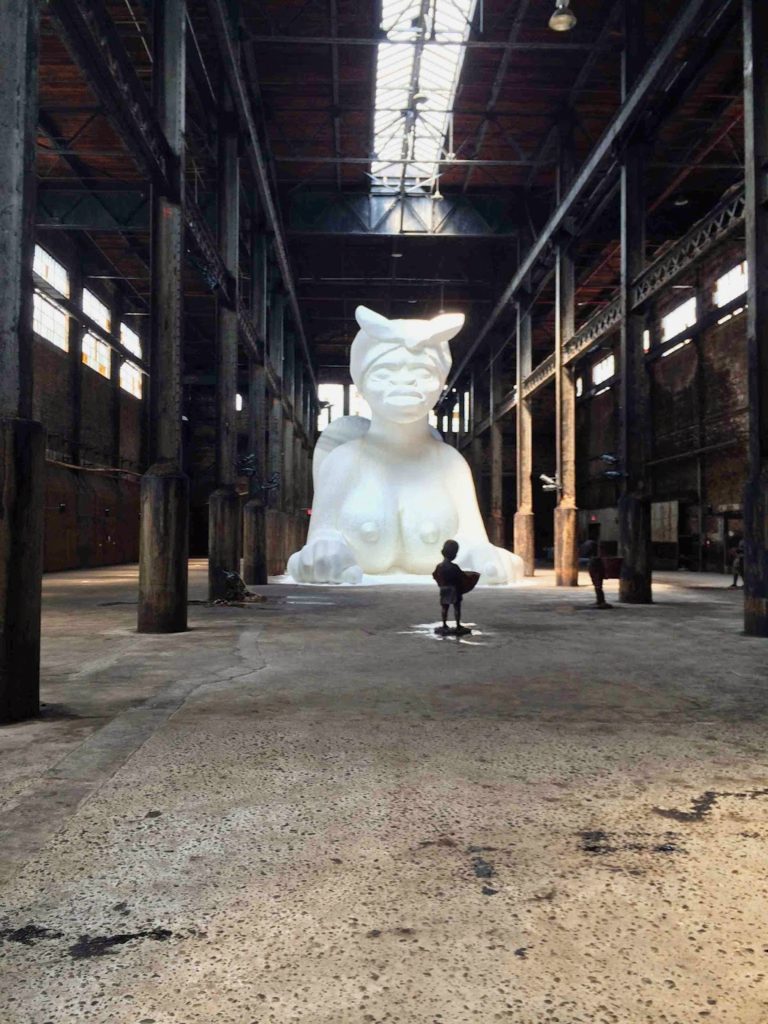A few weeks ago I had the privilege of a private tour of Kara Walker’s Subtlety exhibit at the soon to be knocked down Domino Sugar Factory in Brooklyn.
The exhibit ended this past weekend. The building will be replaced with a waterfront park.
I will especially miss the nostalgic view of the factory when crossing the Williamsburg bridge.
Since it’s premiere in May over 130,000 people have viewed these sculptures, three of which were Beyonce, Jay-Z and little Blue Ivy. Domino donated 80 tons of sugar. About half was used for the creation of these glorious sculptures fashioned as a tribute to generations of sugar workers.
Produced by Creative Time, the same organization that commissioned Tribute in Light, the twin beacons of light that illuminated lower Manhattan six months after 9/11, the exhibit was located in what used to be the raw sugar warehouse.
Upon entering the building one is hit with the surprisingly strong, pleasant smell of molasses and caramel. The aroma permeates every corner of this enormous beautiful space. The now famous sugar coated Mammy Sphinx rests on one end. Once you see her, one realizes not even a space this size can contain her power.
Molasses drips from the walls, puddling and staining the floors.
Columns as well, where sugar is piled around the edges.
According to Creative Time’s curatorial statement, the factory was Built by the Havemeyer family in 1856, by 1870 it was refining more than half of the sugar in the United States, producing over 1,200 tons every day. Now it will be just a sweet memory. I’m still mad at myself I didn’t take the once in a lifetime opportunity to lick a wall.

